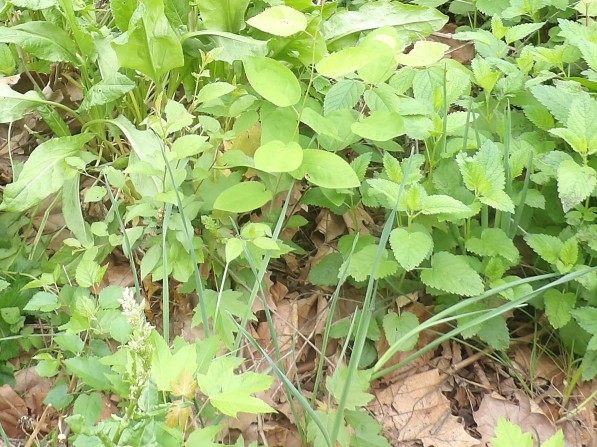Create seed list
Create a list of seeds you plan to purchase and use that list to make your purchase.
If you plan to purchase seeds just enough for one year planting,
Know the number of seeds per gram or oz.
Know how many quantities of any vegetable you plan to harvest.
Know the germination rate of the seed
Determine how many seeds minimum to purchase to ensure you have enough seeds to plant to be able to harvest at least the quantity estimated.
You can purchase small packet seed at local grocery store or nursery or greenhouses.
You can purchase bulk seeds from online nurseries.
You can choose to grow a little of everything you like to grow, or you like to eat.
You can select few things you like to eat and grow a large quantity of them.
If you choose the later, you can use food pyramid or MyPlate to guide you in your selection.
MyPlate food group
Based on MyPlate our diet consists of:
Grain
Vegetables
Fruit
Protein
Dairy
Vegetable and fruit total to 50% or more of the entire group.
To grow some of our food to save money, supplement our groceries, and eat healthy, I focus on growing 2 categories of our food group:
Fruit
Vegetables.
My history of growing food and trying different types of gardening style, I noticed:
I don’t like to dig too much in our garden. Therefore, I don’t harvest root crops I grow.
I don’t like to babysit plants. I don’t like to interfere in their growth. I prefer to observe them.
I don’t like to water or weed the garden.
With my personality type in mind, I narrowed down what is good for me to grow:
Perennial vegetables:
They do well among weeds. If you don’t have time to spend in the garden, you can still have food growing in the garden for you to harvest.
They save money in the sense that you don’t need to water them. You purchase the seeds to plant them and assist them to grow. Then you propagate from root, cutting, and or seeds depending on the plant to increase your production.
You don’t need to think about what to plant every spring. When people start planting, you might start harvesting your greens.
Fruit trees:
If you and your household eat fruit, you could plant some of the fruit you eat.
You could save money growing them.
This year I decided to be more intentional with our garden and grow more to supplement our groceries.
With that in mind, I noticed, I purchased cabbage a lot during the year, and some were moldy. Additionally, sweet bell pepper from the store was tasteless as well as carrot. I stopped purchasing cabbage and purchased frozen kale instead.
That gave me a starting point on what to grow.
Additionally, instead of trying to grow everything we buy, I decided to focus on few annual vegetables a year but try to grow a lot of them.
Even by choosing to grow 2 food groups fruit and vegetables, I still need to narrow them down more since I grow food from ¼ acre land in the city and live in US garden zone 5A.
Herbs for seasoning
Leafy greens
Root vegetables
Leafy greens
We could use them in our cooking, in salad, and stir fry. Draft the list to include:
Cabbage (Brassica oleracea)
Kale (Brassica oleracea (acephala group))
Collard (Brassica oleracea (acephala group))
Chard (Beta vulgaris)
Chicory (Cichorium intybus)
Mustard (Brassica juncea (integlifolia group))
Turnips greens (Brassica napa)
Peas (Pisum sativum)
Green Beans
Root vegetables
Because I don’t like to dig too much in the garden and bother living organisms in the groud, I select the following root crop that grow bulbs above ground, of doesn’t require much digging to pull out:
Beet (Beta vulgaris)
Carrot (Daucus carota)
Kohlrabi (Brassica oleracea (gongylodes group))
Radish (Raphanus sativus)
Rutabaga (Brassica napus)
Turnip (Brassica napa)
Squashes
Zucchini
Butternut squash
Spaghetti squash
Herbs/spices
Hot pepper
Sweet bell pepper
Perennial herbs (hardy to your zone)
Annual herbs
Perennial herbs hardy to zone 5A (to plant in 2025)
Salad Burnet (Sangulsorbo minor)
True Greek Oregano (Origanum vulgare hirtum)
Lovage (Levisticum officinale)
Turkish Rocket (Bunias orientalis)
Annual Herbs—2025
Dill (Anethum graveolens)
Basil Italian Genovenese (Ocimum basilicum)
Chevril (Anthriscus cerefolium) (A kid chose it to grow)
What’s your process for picking out and buying seeds?
From the list you draft like in the example above, you can choose to grow a little of everything. In this case you can purchase small packet seeds.
Alternatively, you can select few from the list to buy their seeds to plant and plant a lot of them. Therefore, buying bulk seeds.
To make that selection, I opt to choose by scientific name and rotate what I plant every year by growing a different type of vegetable not in the same family group to allow the land to replenish itself of the nutrients consumed by the plants by the time I plant them again.
Therefore, we could grow:
Year 1: Brassicas
Year 2: Beta vulgaris
Year 3: Cichorium intybus
Year 1: Brassica oleracea
Year 2: Beta vulgaris
Year 3: Brassica napa
Year 4: Cichorium intybus
Year 5: Brassica juncea
Year 6: Brassica napus
We could select one leafy green family and pair with carrot and radish and squash. You could rotate where to plant carrot, radish, and squash every year.
Pick few vegetables and purchase seeds in bulk to grow them in abundance to see if we can row enough of them and not to purchase them during the year at the grocery store.
Where to buy seeds and what to grow?
You can check local nurseries in your area. But with the planting strategy above, we want to purchase few seeds and purchase them in bulk. I found locale nurseries carry small packet seeds. Therefore, I chopped seeds online where there are options to purchase bulk seeds for a good price.
We purchased our seeds from Fedcoseeds.
Instead of purchasing small packets of a lot of seeds, you can narrow down seeds to purchase, and purchase bulk size to grow them in large quantity.
Biomass/Cover crop
In an attempt to feed our soil and let our soil feed us, we want to generate a lot of green matter that will decompose in the garden to enrich the soil.
Our fruit trees in the garden don’t generate a lot of brown leaves in fall yet to mulch the garden.
The wild plant growing in the garden as well as mint produce matter for the ground.
If we decide to weed the garden more, we will need to grow a cover crop (clover, alfalfa) or grow a vegetable in large quantity for some parts of the plant to return to the soil after harvest.
Squashes produce large leaves.
Carrot produces tap root that can aerate the soil.
Comfrey (Symphytum officinale) produces large leaves that can be used to mulch.
With this in mind, I ordered some vegetable seeds in large quantity for them to serve as cover crop or biomass source for the garden as well.
Fertilizers
The goal is to focus on feeding the micro-organisms in the ground to enrich our solid and our plant will grow better in a rich soil to feed us.
Because annual vegetables require a lot of nutrients to grow through their entire cycle in one year, you plan to use natural fertilizer like bonemeal which contains nitrogen and phosphate.
Clover and alfalfa are in the legume family and are nitrogen fixer.
We plan to grow peas and green beans as they are nitrogen fixer.
Choose your gardening style
Perennial gardening
Mulch gardening
Inground gardening
Raise bed gardening for some annuals
A combination of few styles
Goal:
Feed your land & let your land feed you!
Conclusion: What’s your process for picking out and buying seeds
Annual vegetables produce a lot compared to perennials. But it is good to start small and make adjustment to your seed’s selection and purchases year after year by taking into consideration what grow well in your garden, what your household like to eat, and what you like to grow.
The video explains how we pick seeds to buy to grow in our garden in 2025.
Resources
Related article categories
Disclaimer:
“I am not an attorney to practice law. I am not allowed to draft legal documents, give advice on legal matters including immigration, or charge a fee for these activities.” I am not a CPA. Our contents are informative and based on our knowledge and experience. Use them at your own discretion.
Ads Disclaimer:
Ads are displayed in our contents. These ads do not influence the content we create and publish. We do not endorse them either.
Affiliate links Disclaimer:
Our Videos and articles contain affiliate links. When you click on them and make a purchase, we will receive a commission. We thank you very much for your support!
Our Vision
Nina’s Soap was created to help you live a healthy lifestyle within your budget while increasing your net worth.
Liberman Consulting L.L.C.’s contents are about different ways to save money, different ways to make money to reach your financial independence where you don’t worry about money or depend on your job to provide for your family.
Our Objectives
At Nina’s Soap (Liberman Consulting L.L.C.), you will find information about living a quality life within budget and increasing your net worth. Topics covered include personal finance, investment, business management, cooking from scratch, and growing some vegetables and fruit to save money and eat healthy.
Our content categories:
Personal Finance: Saving money, budgeting, investing, swing trading stocks
Cooking from scratch to eat healthy and save money: Grocery list, meal plan, sourdough starter, simple dishes.
Sustainable Perennial Food Garden Zone 5A: Low maintenance vegetables to grow to save money and eat healthy
Business management: Business tax, inventory management, business bookkeeping, making money online, IT.
Production: Sew to sell, YouTube content to make money online and to market your online store.
Self-Improvement: Work life balance, productivity.
“https://ninasoap.com/membership-join/ (We welcome you to join us. Email List)
care@ninasoap.com (contact info for any questions you may have)
https://ninasoap.com (blog), https://liberdownload.com (digital products), https://ninassoap.com (natural products), https://liberlabel.com (custom apparel), https://liberoutlet.com (resale store), https://www.youtube.com/c/LibermanConsultingLLC (YouTube Channel), https://www.pinterest.com/ninassoap/ (Pinterest), https://ninasoap.com/affiliate-products/ (Our resource page)”.

